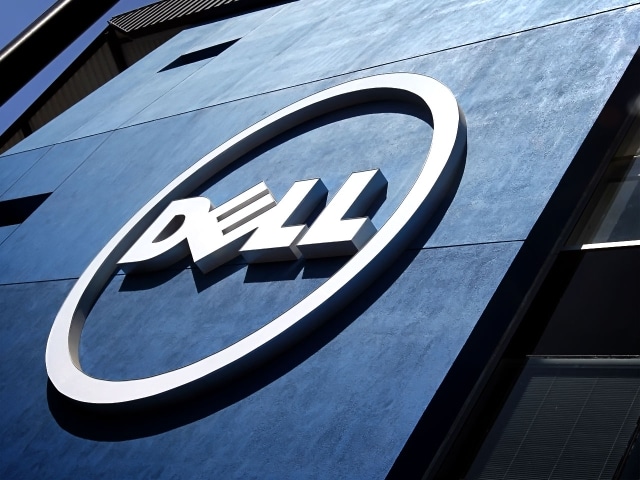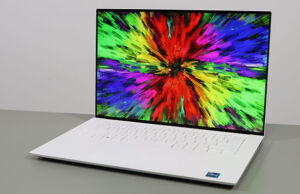Update – January 22, 2022
The following steps are confirmed to work with the XPS 15 7590:
1. Set BIOS settings to default
2. From BIOS -> Security, disable UEFI firmware capsule updates ‘
3. Run BIOS from Windows; the system will restart
4. Watch BIOS patch process. EC Controller may fail to patch but others will succeed. When finished, press F2 repeatedly to enter BIOS.
Do not let the laptop boot to windows before completing steps 5-6.
5. Reset BIOS setting to default
6. Boot to Windows
Update – April 22, 2020
As suspected, Intel’s 10th-gen Skylake-based (6-8 core) chips in laptops are shipping with undervolting abilities disabled from some (if not all) OEMs. Well-known tech YouTuber Dave Lee reviewed his loaned MSI GS66. Among his criticisms were the build quality, price, and lack of ability to undervolt.
Until OEMs and Intel find ways of mitigating “plundervolt” without disabling a key feature of the chip that has become crucial on today’s thin, light, and undercooled notebooks, I cannot recommend purchasing any 10th-gen-equip systems if efficiency or performance are your main concerns.
Hopefully Intel will be able to produce a proper fix for this vulnerability that does not involve disabling undervolting, or I suspect they are going to lose even more market share to AMD.
Original post below:
I noticed that the temperatures on my XPS 15 7590 had been going crazy as of late. Instead of peaking at around 87C during mixed usage, I was seeing temperatures hitting 100C. At first I thought I had been the victim of rabbit hair and dried-out paste, and so disassembled the laptop for a cleaning. After cleaning and repasting, however, my temperatures were still hitting 100C.
“That can’t be right”, I thought.
I checked my Throttlestop settings more closely, and lo and behold, my undervolts were all listed as 0.000mv. I recalled someone in my comments here on the Throttlestop guide had expressed a similar issue on their Dell G3 laptop, and then I remembered a security vulnerability that Intel had announced a few months back — then everything clicked. Dell must have silently pushed a BIOS update through Windows Update that disabled undervolting to mitigate the Plundervolt vulnerability.
Before we get into how to roll back the BIOS and re-enable undervolting, we should address whether undervolting actually needs to be disabled or not. The security exploit requires physical access to the machine, and so I think for nearly all home users, that already makes this something you do not need to worry about (enterprise might be another story, though). Intel left it up to the manufacturer for how to address this issue, and Dell cheekily decided they would push a BIOS update over Windows Update without telling anybody. That would be fine if undervolting wasn’t a literal necessity on the XPS 15 due to its thermal limitations.
So, how to fix this? Regardless of your manufacturer, you’ll need to find the next most recent BIOS update, download it, and re-flash the BIOS. For the XPS 15, that’s 1.5.0, but you can generally find this by looking at the most recent BIOS update listed on your OEM’s website, and lowering that number by 1 integer (e.g. if the most recent BIOS that disables undervolting is 1.9, try to look for 1.8).
You can’t just install the update and be done with it on the Dell, though. After the update finishes, press F2 to go directly to your BIOS settings. Here, you’ll need to reset the settings to the BIOS defaults. If you don’t do that, undervolting will not be available.
There’s one more thing you’ll need to do, which is disable for the ability of the BIOS to be updated through Windows Update again. Under the “Security” tab, look for the option “UEFI Firmware Update Via Capsules” and turn that off.
Once done, you can restart and your undervolt should be working again. Be wary of any additional BIOS updates, as they will almost certainly remove your ability to undervolt, and perhaps even re-flash.













The Scott
April 17, 2020 at 2:58 pm
Is this laptop worth purchasing if undervolting is necessitated by its poor cooling and thermal limitations?
Douglas Black
April 17, 2020 at 4:41 pm
That's a good question. Yes, I think so, but there are a lot better laptops coming out soon in 2020 that will make the XPS 7590 no longer the best all-around. If you can get one for around $1200 USD or less, I would still say it's a good buy
Petar
April 19, 2020 at 11:44 pm
Undervolting is not the only option, there are few others:
– intel xtu to change power throttling (wats)
– core park (3rd party utility) to force windows to park cores more agressively (nobody needs 8 cores simultaneously)
– windows powercfg actually does same as above 3rd party utility and much more, except hard to use
Brad331
June 5, 2020 at 6:36 am
Thanks Petar, but I have to say nothing truly replaces undervolt. Undervolting is the only thing that actually makes the CPU more efficient (more performance per watt). Other tweaks are mostly just finding different balances on the slow-hot tradeoff curve.
Leandro
August 5, 2020 at 1:31 am
Architects, Engineers, 3ds artists, video editors, photografers, actually a whole lot of us needs the 8 cores simultaneously. Don't let us out yet.
Tony
April 21, 2020 at 8:57 pm
It's still an excellently built all-around very good laptop. Whatever upcoming refresh might be around the corner for the XPS will almost certainly have the same problems. Thermal throttling is the price we way to have thin-and-light ultraportable laptops that don't sound like a chipmunk's hair dryer attempting lift off. (Even then…)
Between supply chain disruptions and the periodic model refresh cycle, right now is a particularly poor time to be buying a new laptop unless you can score an excellent deal on outgoing models. Sometimes you just aren't able to wait though.
Douglas Black
April 21, 2020 at 9:25 pm
Leaks and rumours say next month have a lot of laptops dropping. Wait until then for sure.
Tony
April 21, 2020 at 8:18 pm
…and just like that, this website just got added to my daily browsing habits.
This article and your ThrottleStop guide alone have been invaluable resources.
Thanks for the heads up!
I don't really have the time or inclination to troll Reddit on a daily basis, so I'm glad someone does that can pull out the really important information and get it in front of me before things get locked out.
Douglas Black
April 21, 2020 at 8:20 pm
Thank you very much for your kind comment! Truth be told, I've not been writing news as much because it tends not to get many views. However, I think it's important to write up important stuff like this to let the companies know people do notice and they do care. I will try to keep writing more PSAs. :)
Best,
Douglas
Tony
April 23, 2020 at 4:52 am
So on my G3 3590, updating to 1.9.2 locked out undervolting altogether. In my BIOS, when I click "Restore Settings", the only options are "BIOS Defaults", "Last Known Good Settings", and "Custom User Settings". Loading the "BIOS Defaults" did not restore undervolting for me.
I had to unpack the BIOS and find the CFG Lock offset, then use an EFI shell to toggle the bit manually to restore undervolting. I could also downgrade to 1.8.0, but I'd like to keep the other security fixes. Detailed instructions are available in the following Reddit post:
https://www.reddit.com/r/Dell/comments/fzv599/xps_7590_160_uefi_unlock_undervolting_and_remove/
For the G3 3590 BIOS 1.9.2 in particular, the CFG Lock is located at 0x5C3.
Tony
May 15, 2020 at 4:51 am
In case anyone else is wondering, for the G3 15 3590 BIOS 1.10.0, the CFG Lock is still at 0x5C3.
Douglas Black
May 15, 2020 at 5:08 am
I feel like now we're in the "Technological Dark Web" ;)
Tony
May 15, 2020 at 5:10 am
LOL. I'm doing this as much for myself so I can find it again later when I need it. 😁
Muleke Neutro
October 18, 2020 at 2:35 am
How could I do this on my dell g3 using Windows 10?
Leandro
August 5, 2020 at 1:34 am
Same thing for the G5 5590 with a i7-9750h.
But man, I think I am not ready to mess with a bios file yet. But I will sabe your comment for future needs. Thank you very much.
DavidC1
April 23, 2020 at 1:31 pm
It should be clarified that 10th Gen 10nm "Icelake" processors are not affected by Plundervolt. New vulnerabilities are affecting cores based on Skylake(which includes Comet Lake).
Douglas Black
April 23, 2020 at 6:22 pm
Thank you for this – I did not know it didn't affect Icelake.
Sybarite
April 24, 2020 at 12:17 am
much techie respect for including undervolting info.
I undervolt when I can because I don't need the last bit of performance and appreciate cooler & quieter running (and battery life). I really don't see downside
bittricks
April 25, 2020 at 7:02 pm
If the new AMD chipsets are so great, then why don't the OEMs offer AMD variants of their flagship laptops such as the XPS series, MacBook Pro and ThinkPads ?
In my experience, for laptop AMD CPUs, the specs and benchmarks look great on paper yet the real-world overall AMD experience has been a let-down every single time. The mobile AMD CPUs never have delivered the same performance as the Intel ones.
It's pretty darn disappointing when you sink big money into an AMD laptop that is touted as being an Intel-killer that is gonna smash and leave your prior Intel experiences in the dust, yet the real-world experience definitely shows that mobile AMD is not. It's all paper and marketing gloss.
The last time I paid a premium for a top-of-the-line AMD "thread ripper" laptop, it was most definitely not an Intel beater.
Anyway, the OEM plundervolt solution to disable undervolting is a liability reaction. The chances of it actually being exploited are statistically low. I mean it doesn't even need any kind of thought beyond common sense to figure that out.
Andrei Girbea
April 25, 2020 at 7:20 pm
Past experience is irrelevant in this case, because AMD never had a platform similar to their Ryzen 4000. The Hs are excellent in multithreaded loads, and the Us are pretty much spectacular in comparison to the Intel COmet/Ice Lake offers. Both are also efficient, which has been a major problem for AMD hardware in the past.
However, Intel have a long past history with OEMs, so it's going to take time before AMD gets to be implemented in higher-tier products. There won't be many of those this year, and by next year Intel might have a better platform as well.
Nonetheless, AMD offers the better mobile hardware at this point, and there's no way denying this. It's not marketing, it's the reality, and AMD has come a very long way with this hardware gen.
Also, which Threadripper laptop are you talking about? There's no such thing as far as I'm aware
bittricks
April 29, 2020 at 10:26 pm
I suppose I used "Threadripper" inappropriately since it applies only to the desktop version.
I don't game. I don't do a single thing that is graphics intensive. All I ever do is productivity and virtual machines. I compared latest Intel and latest AMD in a store, side by side, and AMD does not do any better than Intel. To me it is marketing. It's all paper. Graphics benchmarks mean absolutely nothing to me as they have no relevance whatsoever to what I do.
For virtual machines, the jump from an i7 7700HQ to an i7 9750H made a noticeable, but not huge difference. And I'm betting that jumping from an i7 9750H to the most powerful AMD mobile CPU would like be of little significance in terms of making virtual machine creating\running faster.
Some will argue that more cores will benefit virtual machines and speed them up significantly, and that just isn't true in practice. The differences are incremental.
AMD markets their new chips as if they blow Intel out of the water, and that just ain't true. 10 % increases in productivity benchmarks to me is a pittance as it is not a difference that will amount to anything. What ? Perhaps deliver a few second per hour gain, at best ? I'm not crunching gigantic Excel spreadsheets that take 40 minutes to go through and a 5 minute time savings is going to matter.
Benchmarks are just benchmarks. Most of the time they bear little relevance to the reality of how most people use their machines. For hardcore gamers, I can see it being meaningful, but for your typical office\antivirus\web browser type, the chip OEMs push marketing hype. Both Intel and AMD are equally guilty of this.
At least that is my perspective.
Ascaris
August 5, 2020 at 1:08 pm
"Anyway, the OEM plundervolt solution to disable undervolting is a liability reaction."
Since Plundervolt is an exploit of Intel's Software Guard Extensions (SGX), perhaps the OEM would consider disabling of undervolting only while SGX is enabled?
Trent
April 28, 2020 at 2:52 am
Hi Douglas,
You mentioned "peaking at around 87C during mixed usage".
How did you put workload to this "mixed usage"? Like running Cinebench, PCMark, etc.?
Could you kindly share?
Douglas Black
April 28, 2020 at 3:02 am
Sure, Trent; happy to answer. Scenario 1: Listening to music in rekordbox, running discord, Steam, GoG, VMWare, Slack, Vivaldi with 12+ tabs, and google chrome, and occasionally processing audio files with Mixed in Key.
Scenario 2: Playing music on rekordbox, vivaldi open, while playing a moderate-to-greatly-demanding game.
mNiosu
May 7, 2020 at 6:05 pm
I used -125mV on CPU, GPU and cache and it's stable. From what I've read i5 is kind of limited here. i7 can go further. I still get spikes of 95C while gaming even with the fan profile on performance and laptop resting on a Trust GXT 278 cooler stand. So I'm thinking about repasting. Is Arctic Silver 5 good (is supposed to be not be electrically conductive)?
Douglas Black
May 7, 2020 at 6:47 pm
AS5 is good, though I am very partial to Gelid GC extreme
Tony
May 7, 2020 at 7:11 pm
Pretty much any decent thermal paste applied properly should give you some help. I used Arctic MX-4 recently and it did a good job.
figrin1
December 8, 2020 at 10:36 pm
Often BIOS come paired with new EC Firmware. Just re-flashing an old version of the BIOS can brick a computer. I'd be careful about that recommendation.
Jacob Arlington
January 22, 2022 at 7:27 am
You can have UnderVolt on all bios versions!!!
1. Go to Bios reset bios to default
2. Uncheck UEFI firmware capsule updates in your current bios under the security section
3. Download and run this as an administrator
4. Download Bios your system bios that were released before December 2019
5. Downgrade bios to the old version
6. Reboot the system before windows boot Repeat steps (1 & 2)
7. After Windows boot update your bios to the latest version and it will work with whatever version is your bios now
8. This is the proof https://i.imgur.com/InzQ4qI.png
Jacob Arlington
January 22, 2022 at 7:29 am
You can have UnderVolt on all bios versions!!!
1. Go to Bios reset bios to default
2. Uncheck UEFI firmware capsule updates in your current bios under the security section
3. Download and run this as an administrator ( https://github.com/Brad331/NoDPTF )
4. Download your system bios that were released before December 2019
5. Downgrade bios to the old version
6. Reboot the system before windows boot Repeat steps (1 & 2)
7. After Windows boot update your bios to the latest version and it will work with whatever version is your bios now
8. This is the proof https://i.imgur.com/InzQ4qI.png
Douglas Black
January 22, 2022 at 7:38 am
Thank you for sharing this — may I ask if the DTPF patch is necessary to get the BIOS downgrade to work? I believe there are some features that Intel DPTF (dynamic performance thermal framework) affects, and I would need to weigh those against the pros of undervolting.
Jacob Arlington
January 22, 2022 at 7:47 am
I tried many ways so far this is the one that works for me, you can skip that step and see if it works for you :), Good Luck
Douglas Black
January 23, 2022 at 1:25 am
I followed the following steps and successfully reenabled undervolting on my XPS 15 7590, running BIOS 1.5.0
1. Set BIOS settings to default
2. From BIOS -> Security, disable UEFI firmware capsule updates '
3. Run BIOS from Windows; the system will restart
4. Watch BIOS patch process. EC Controller may fail to patch but others will succeed. When finished, press F2 repeatedly to enter BIOS.
Do not let the laptop boot to windows before completing steps 5-6.
5. Reset BIOS setting to default
6. Boot to Windows
James Matthews
March 3, 2022 at 2:41 am
FWIW, MSI laptops (at least the two previous series) have the ability to undervolt in the BIOS, but by default it's hidden. While in the BIOS, press R-shift+R-CTRL+L-ALT+F2. This should unlock undervolt options in the BIOS under the Advanced Tab.
JohnIL
May 8, 2022 at 2:35 pm
Shouldn't have to do anything to keep a gaming notebook or for that matter any laptop within normal temperatures. It's a bad design when a laptop overheats or thermal throttles under normal use cases. The laptop should be returned for a refund and buy a laptop that can actually provide the performance the hardware can provide and keep it cool. If we have gone beyond the ability to cool the hardware available, then it should not be configured with a laptop that does not have the thermal capabilities to cool that hardware. You should not have to under-volt, turn off turbo mode, buy a cooling mat or disassemble and apply special thermal paste just to run at advertised performance.
danwat1234
December 16, 2022 at 5:40 am
I have two Optiplex 7040 model Skylake i5-6500. Both are seemingly identical. Same BIOS version, TPM version, same clean Windows 10 install but 1 can undervolt via Intel XTU the other the option are greyed out. It is a mystery. I'm saving 9 watts at full load on the 1 and I have a farm of these I want to undervolt.
Tooka
February 26, 2023 at 2:55 am
3. Run BIOS from Windows; the system will restart
>> What does "Run BIOS from Windows" mean ?
4. Watch BIOS patch process. EC Controller may fail to patch but others will succeed. When finished, press F2 repeatedly to enter BIOS.
>> ??